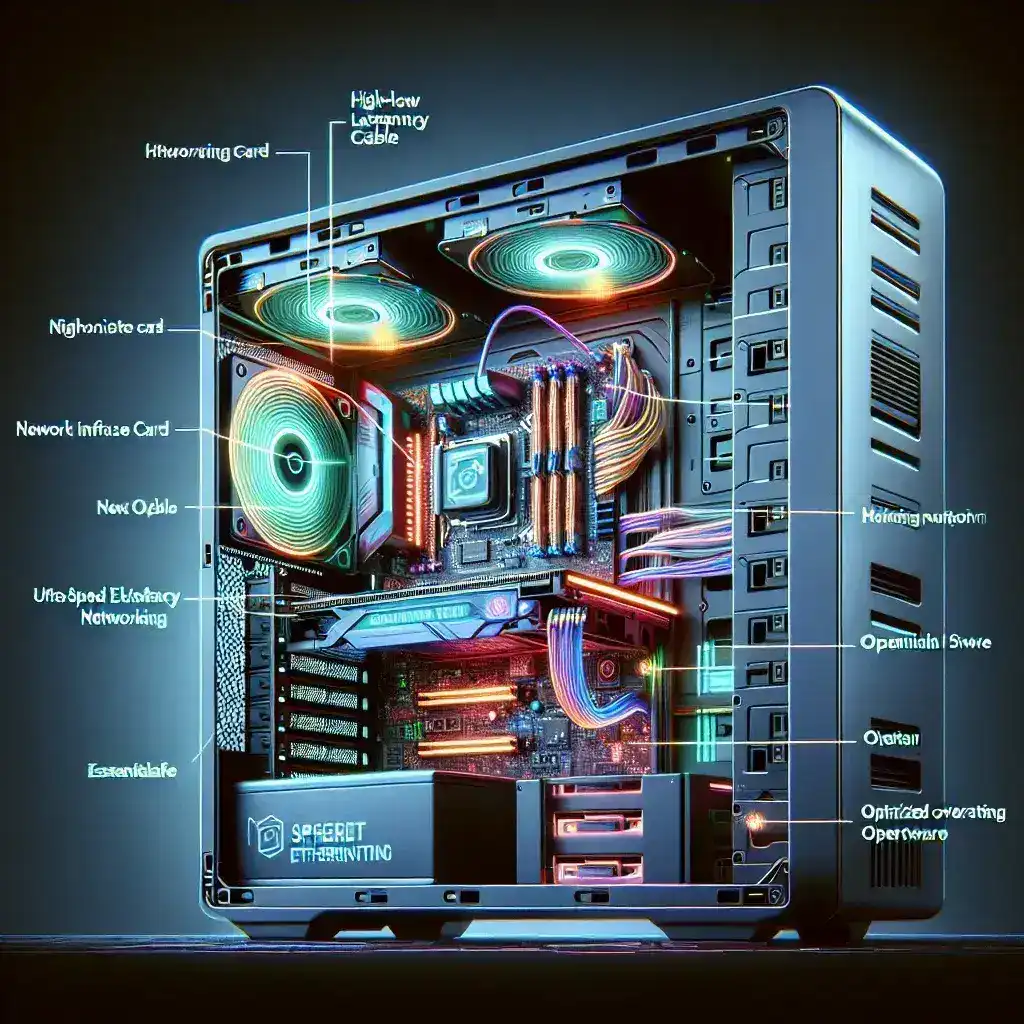For gaming enthusiasts, ultra-low latency is crucial for a seamless and competitive gaming experience. Latency, often referred to as ping, is a measure of the time it takes for data to travel from your gaming PC to the game server and back. High latency results in lag, which can hamper performance and reduce the overall experience. In this article, we'll delve into how gaming PCs optimize for ultra-low latency networking
Components and Technologies
Gaming PCs optimize for ultra-low latency by incorporating advanced components and technologies designed to enhance networking performance. Here’s a look at some of the critical elements:
| Component/Technology | Description |
|---|---|
| Network Interface Cards (NICs) | Specialized hardware that handles network traffic efficiently, reducing latency. |
| Gaming Routers | Routers equipped with Quality of Service (QoS) settings to prioritize gaming traffic. |
| Ethernet Cables | High-quality cables (Cat 6 and above) to ensure faster and more stable connections. |
| Network Protocols | Optimized protocols that minimize data packet loss and latency. |
| Software Solutions | Applications and drivers specifically designed to reduce network latency. |
Network Interface Cards (NICs)
High-end gaming PCs utilize specialized Network Interface Cards (NICs) such as the Killer NIC series or Intel Gaming NICs. These NICs come with advanced features and firmware designed to manage network traffic effectively, reducing latency and packet loss. They also offer features like traffic prioritization and offloading tasks from the CPU to ensure your system remains responsive during intensive gaming sessions.
Gaming Routers
Another essential component in optimizing for ultra-low latency is the gaming router. Unlike standard routers, gaming routers come with advanced Quality of Service (QoS) settings. This allows users to prioritize gaming packets over other types of internet traffic, ensuring that your games receive the bandwidth and low latency needed for real-time performance. Brands such as ASUS ROG, NETGEAR Nighthawk, and TP-Link offer highly rated gaming routers.
Ethernet Cables
While Wi-Fi can offer convenience, Ethernet cables provide a much more stable and faster connection, crucial for reducing latency. Using high-quality Ethernet cables like Cat 6 or Cat 7 ensures a stable connection with minimal interference and optimal data transfer speeds. These cables are designed to handle higher bandwidths and less signal degradation compared to older Cat 5 cables.
Network Protocols
Optimized network protocols are essential in reducing latency and ensuring efficient communication between your gaming PC and the game server. TCP (Transmission Control Protocol) and UDP (User Datagram Protocol) are commonly used in gaming. While TCP is reliable, it can introduce latency due to its acknowledgement packets. UDP, on the other hand, is faster as it does not require acknowledgment, making it preferable for real-time games.
Software Solutions
Several software solutions aim to optimize the network performance of gaming PCs. These include:
- Network Optimization Tools: Applications like WTFast and Haste can route your gaming data through optimized paths, reducing ping times and packet loss.
- Firewall and Anti-Virus Configurations: Adjusting your firewall and anti-virus configurations can also help reduce latency. Ensure that these programs are not scanning game data frequently.
- Driver Updates: Keeping your system’s network drivers up-to-date can fix bugs and improve performance.
- Operating Systems Tweaks: Windows offers several settings that can be adjusted to improve networking performance, such as disabling interrupt moderation.
Conclusion
Reducing latency is a multifaceted approach involving both hardware and software optimizations. By incorporating the right network interface cards, gaming routers, high-quality Ethernet cables, optimized network protocols, and supportive software solutions, you can significantly enhance the networking performance of your gaming PC. This ensures a seamless, lag-free gaming experience that keeps you ahead in competitive scenarios.
